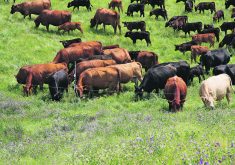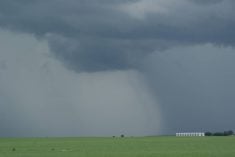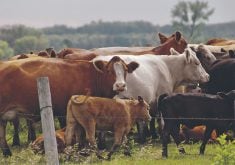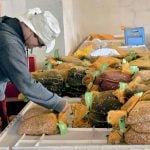Who’s foolish?
To the Editor:
Everyone has a right to their opinion but Kory Teneycke of the Canadian Renewable Fuels Association has done himself no good by referring to me as a “foolish, foolish man” in my pursuit for the use of biodiesel. I have received calls on your article (WP, May 5) in praise of my promotion, by others doing just about the same.
Teneycke is also saying there are many thousands of foolish people in Europe who have done this for years with positive, not negative, results.
Read Also

Farmer ownership cannot be seen as a guarantee for success
It’s a powerful movement when people band together to form co-ops and credit unions, but member ownership is no guarantee of success.
He has not asked if I use a diesel conditioner that contains a rust inhibitor, which I do, and have for years. It also contains a cetane improver, which boosts available power.
He is perhaps the fool for not pushing for Canada a quicker road to the use of renewable fuels.
I know from my European research that I am doing no harm to my motors. In fact, the opposite. It is about time prominent positioned people in Canada removed themselves from talking negatively on subjects that other countries are grasping and moving right along with, especially on this renewable fuels subject, which is so important to the good of this world.
– Nick Parsons,
Farmington, B.C.
Penny bananas
Those multinational corporations control grain markets.
Why would they give Canadian farmers any more money for their grain than what they would give to farmers in Kenya, who produce handfuls of bananas for pennies?
– Valentine Pomedli,
Pilger, Sask.
Swine protest
On May 17, 49 plus ratepayers of the County of Clear Hills attended the legislature in Edmonton to protest the proposed building of swine factories by Northern Swine Systems Inc. in our county.
By show of hands at the several meetings held in our county, the ratepayers almost unanimously voted against these hog factories.
This is a hot issue as far as our ratepayers are concerned. They took off time in the middle of spring seeding to carry out this protest. Many of those who could not attend donated money to pay for bus rental.
Our objective was to have our concerns brought before the Legislative Assembly. We wanted to get across the fact that these swine factories will create monumental degrees of harm to our environment and the well-being of our citizens.
We have researched swine factories in Peace River County, other parts of Alberta, Canada and the world. We have found that swine factories directly pose a threat of pollution to the air, water and soil.
Other problems created by these factories include decreased land values, severe health problems causing people to move and a damaging effect on tourism.
Why can’t people who are in favour of these barns realize that they are leaving a polluted inheritance for future generations?
We tried to contact our elected official, Hector Goudreau, about this issue, but he did not return our calls. After speaking to several members of the opposition, who gave us advice, we came away with the determination to fight these hog factories as long as is necessary. We want to ensure our ratepayers that swine factories will never be built in Clear Hills County.
– Genevieve Bean,
Worsley, Alta.
WIT issue
Weyburn Inland Terminal should terminate Rob Davies’ contract.
His performance at the annual meeting April 23 indicates he should be getting his paycheque from the Canadian Wheat Board.
Davies’ 45 minute address was comprised mostly on the fear of the loss of the CWB monopoly. Davies gave the impression that he does not believe in a voluntary CWB.
WIT was built by farmers for farmers and to have the CEO of WIT disagree with freedom and choice is not acceptable by a large majority of the shareholders of WIT.
– Michael Schell,
Lampman, Sask.
Flares & health
There is a gap between the headline that announced the release of the Western Canada Study of Animal Health Effects Associated with Exposure to Emissions from Oil and Natural Gas Facilities and the reality down on the farm. (WP, May 25.)
The study by Western Interprovincial Scientific Studies Association was done in 2004 and released in May 2006.
The media has provided scarce critical review. … I’ve been told that buried in the technical papers of the 716-page report are these facts: the study minimized significant effects in lungs, immune system and mortality at parts per billion sour gas.
For two key indicators, fertility and reproductive intervals, exposure data was not collected.
Following the exposure of our herd to flaring (one half mile from our farmyard), our twinning rate went to four times the norm.
The Skinner Brothers experienced even higher twinning rates in their dairy herd. They were successful in a high-profile Energy Utilities Board hearing to get an oil and gas installation moved out of their Provost-area farmyard. With the removal of this source of pollution, the number of twins declined, even though their herd numbers increased.
In 1988, researchers in Britain analyzed increased twin births in humans and animals exposed to air pollution. No rocket science needed, farmers can count twins be they alive or, as is too often the case, dead.
I acknowledge and applaud the reduction in flaring. However, there are still notable exceptions. WISSA sends a wrong message to the oil patch.
David Pryce, vice-president of western Canadian operations with the Canadian Association of Petroleum Producers is transparent with his comment, “the study gives comfort to the oil and gas industry.”
For others it is rubbing salt into a wound. Farmers who care about their families, their family pets and their livestock, be that horses, cows or alpacas. Livestock plus oil patch emissions equals dead stock. WISSA does not change that equation.
Dr. Guidotti, co-chair of the Scientific Advisory Panel on the WISSA study, asserts air pollution levels in the study area were low by comparison to urban pollution. As polluted air is heavier than normal air, the positioning of monitors is vital.
In too many cases, the monitors are located where they are less likely to detect heavier than air pollutants. It is to be expected that in urban settings there will be more mixing of air. …
In September 2005, Dr. James Argo, medical geographer Ð IntraAmericas Centre for Environment and Health, released a report to be presented to the Public Review Commission in Sydney, Nova Scotia. Research in his report reveals that sulfur emissions are reactive.
As a result, subjects at a distance from a pollution source can be at greater risk than those in closer proximity. Distances in his research were source to five kilometres and five km to 10 km. This could explain why studies like WISSA are open to interpretation.
– Bill Bocock,
St. Albert, Alta.
Subsidy benefits
Your paper complains about U.S. farm subsidies, and rightly so. I feel that if there were no subsidies, the prices we receive would have to be some higher or there would be no farm products.
We are wheat, pea and bluegrass seed producers. For us only wheat and barley are subsidized. We haven’t grown barley for years.
This year our “subsidy” was about $15,000. That didn’t quite pay our property tax. Incidentally, our farm showed a loss in spite of the subsidy.
Let us look at who is really helped by subsidizing farmers. The farmer, no doubt. But are others at least indirectly helped?
Let us use some round numbers to simplify matters. Say the subsidy on wheat is one cent per pound, or 60 cents per bushel. We own about 1,360 acres on average north Idaho land. It can be expected to produce about 50 bu. of wheat, spring and winter, average per year. That is about 68,000 bu. per year. That would give us a subsidy of $40,800 per year, much more than we get now.
Let us look at what the effect that kind of subsidy would have on the market. It would reduce the price of wheat products down the line clear to the final consumer.
Why? Because no buyer ever pays more than he has to. In the long run, the subsidy would reduce the price of wheat 60 cents per bu. or one cent per lb. It would subsidize the bread buyer by about one cent per loaf, and other wheat products likewise.
As about 85 percent of our wheat is exported, wheat would be 60 cents per bu. cheaper to the importer. In reality that is foreign aid. Is that bad? Don’t know.
What I am trying to say is, subsidies help the consumer, perhaps even more than the producer. Without them, enough producers would go out of business to drive the prices up, perhaps even higher for the producer than they are now including the subsidy. Without the subsidy, prices would be more unstable.
What will happen to agriculture? If the costs of operation keep increasing as they have lately, food prices will rise sharply or we will have a worldwide famine. Increases in both prices and subsidies look like the most logical thing to happen.
– George Thompson,
Nezperce, Idaho














